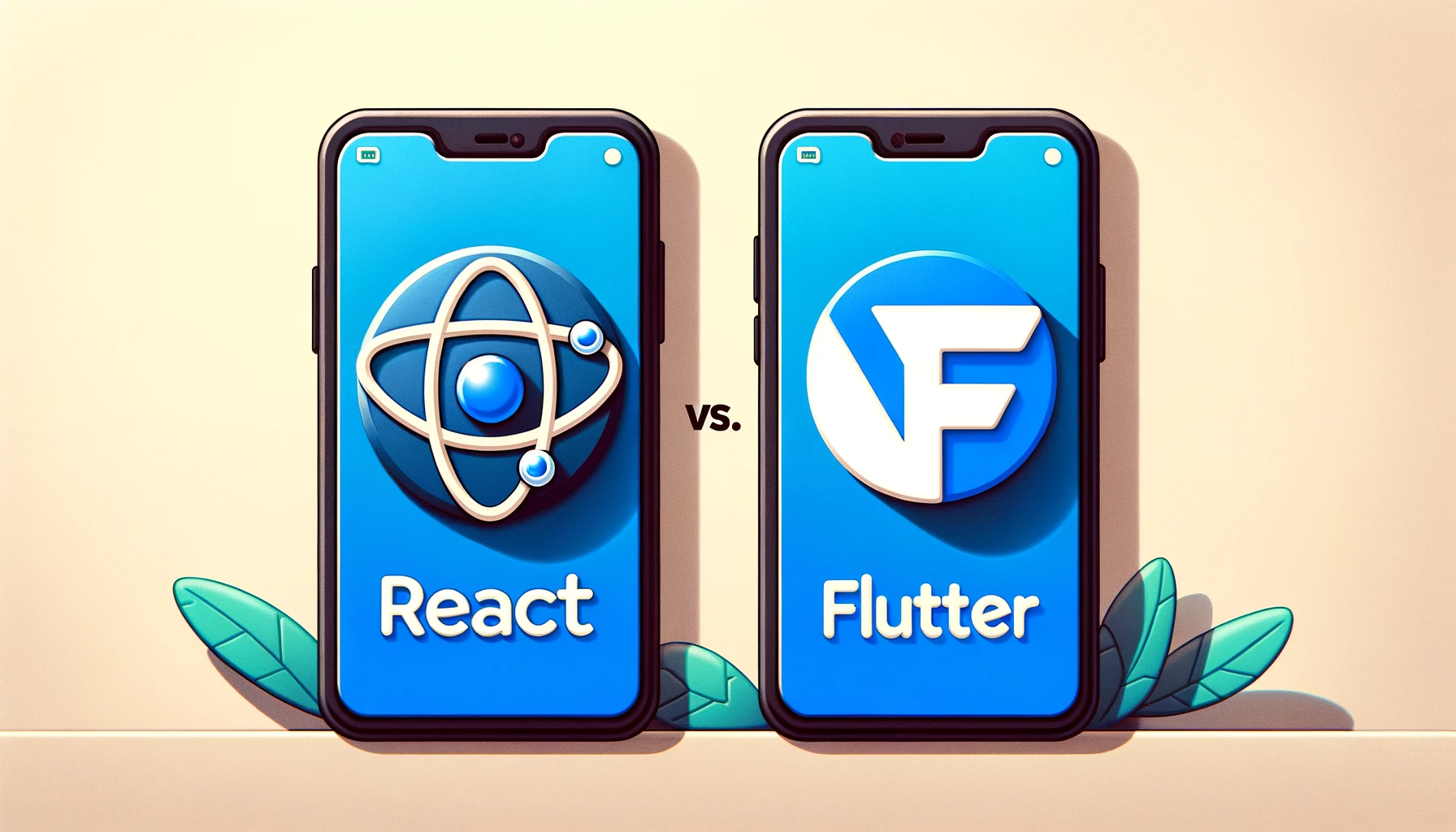App Development
March 14th 2024
React Native vs. Flutter: A Comprehensive Comparison

In the ever-evolving landscape of mobile app development, developers are constantly seeking efficient and powerful frameworks that streamline the process while delivering top-notch performance and user experience. Two prominent contenders in this arena are React Native and Flutter. In this blog, we delve deep into these frameworks, analyzing their market share, developer experience, performance, tooling, community support, and more, to help you make an informed choice for your next project.
Market Share:
React Native, developed by Facebook, has been around since 2015 and has gained significant traction in the industry. It's backed by a robust community and is widely adopted by companies of all sizes, including tech giants like Facebook, Instagram, and Airbnb.
Flutter, on the other hand, emerged more recently, introduced by Google in 2017. Despite its relatively shorter time in the market, Flutter has seen rapid growth and is gaining popularity, especially for its ability to create stunning, highly-customized UIs.
Developer Experience:
React Native, being based on JavaScript, offers a familiar environment for web developers, enabling a smoother transition to mobile app development. Its hot-reloading feature allows developers to see the changes instantly, speeding up the development process.
Flutter, powered by Dart language, provides a reactive and declarative approach to building UIs, making it intuitive for developers. Its "write once, run anywhere" capability ensures consistent behavior across platforms, simplifying the development workflow.
Performance:
Performance is a crucial factor in mobile app development. React Native uses a bridge to interact with native components, which may introduce overhead, impacting performance, especially in complex apps.
Flutter, on the other hand, boasts impressive performance as it compiles to native code, eliminating the need for a bridge. This results in faster app startup times, smoother animations, and overall better performance.
Tools and Support:
Both React Native and Flutter offer a rich ecosystem of tools and libraries to enhance the development experience. React Native provides tools like Expo for rapid prototyping and debugging, along with a vast collection of third-party libraries.
Flutter, backed by Google, offers robust tools like Flutter Inspector for debugging UI, Dart DevTools for performance profiling, and a wide range of packages via Pub.dev for extending functionality.
Community and Companies:
React Native enjoys strong community support with active contributors constantly improving the framework and sharing knowledge through forums, meetups, and online communities. Many notable companies rely on React Native for their mobile apps, including Bloomberg, Discord, and Pinterest.
Flutter's community is rapidly growing, fueled by Google's backing and passionate developers. Companies like Alibaba, Tencent, and Square have embraced Flutter for its capabilities in delivering beautiful, high-performance apps across platforms.
Parent Company:
React Native is maintained by Facebook, ensuring continuous updates and support from a tech giant with vast resources. Its widespread adoption across various Facebook-owned platforms reaffirms its stability and longevity.
Flutter is developed and maintained by Google, which provides strong backing and integration with other Google services. With Google's commitment to Flutter's growth, developers can expect long-term support and innovation.
In conclusion, both React Native and Flutter have their strengths and weaknesses, catering to different needs and preferences. React Native offers familiarity and a mature ecosystem, while Flutter excels in performance and UI flexibility. Ultimately, the choice depends on factors such as project requirements, team expertise, and long-term goals. Whichever framework you choose, both promise to deliver exceptional mobile experiences in the rapidly evolving landscape of app development.
By
InHall Technologies